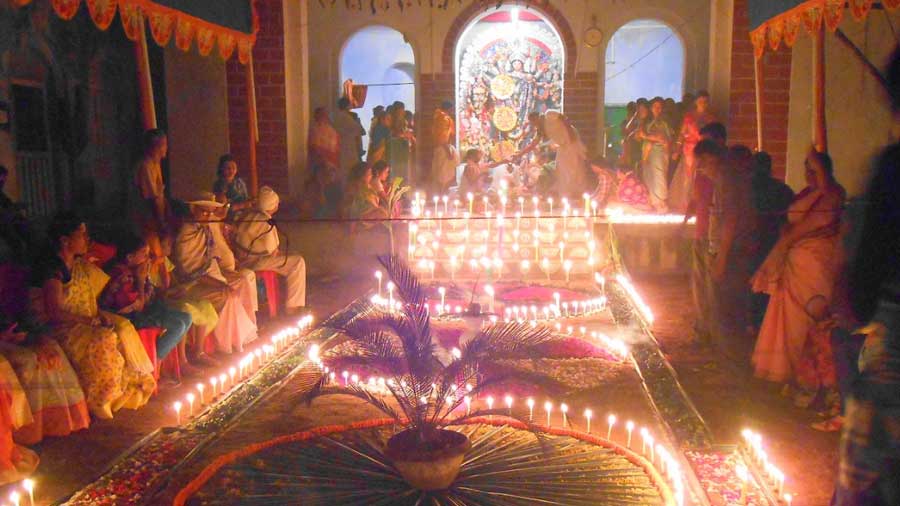With the passing of time, Durga Puja has transformed from a household religious ceremony into a grand carnival. However, far from the big cities, many traditional household Durga Pujas have been celebrated for nearly 250 years — strictly following age-old rituals. This occasion also results in an annual get-together of the family members.
The Bandopadhyay family of Makardah, in Howrah district, has an ancient handwritten document with a detailed description of the rituals to be followed while conducting Durga Puja. The family has resided here since the mid-1700s. A few years later, a Durga Puja was started here by Jagdish Bachaspati of the Bandopadhyay family, who was a priest. Although at present, each branch of the family conducts a Durga Puja separately, the one held at their ‘Baro bari’ is the oldest. Though family members are now scattered in different parts of the world, everyone gathers at the ‘Baro bari’ during the puja.
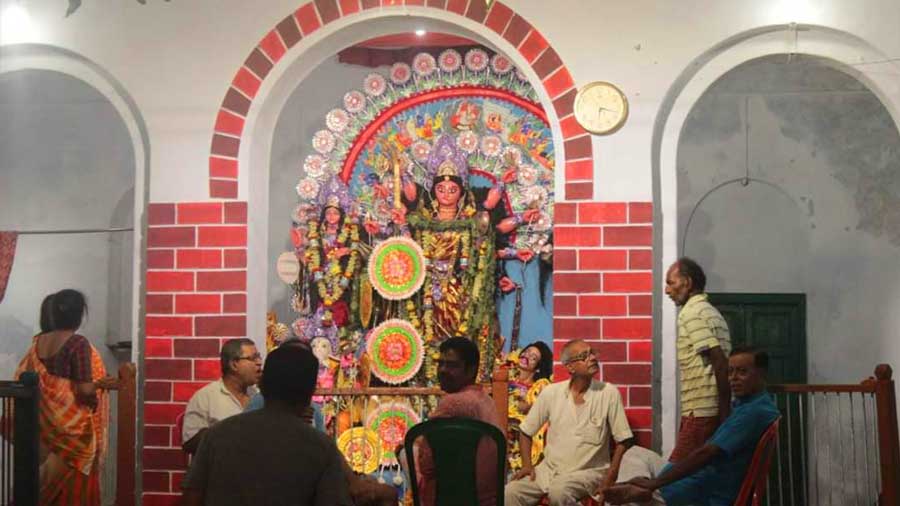
Family members gather at the 'thakur dalan' Bandopadhyay family
According to the family sources, originating from Baganda village near Sitapur in Hooghly district, Jagdish Bachaspati arrived at Makardah sometime in the 1740s, scared by the Maratha Borgi attack. He carried his family deity of Anantadev and a Manasa tree branch with him and the Kundu Chowdhury family, who were in control of the area, allotted land on the eastern edge of Makardah to him. The family deity was established here and Nitya Puja (daily worship) began.
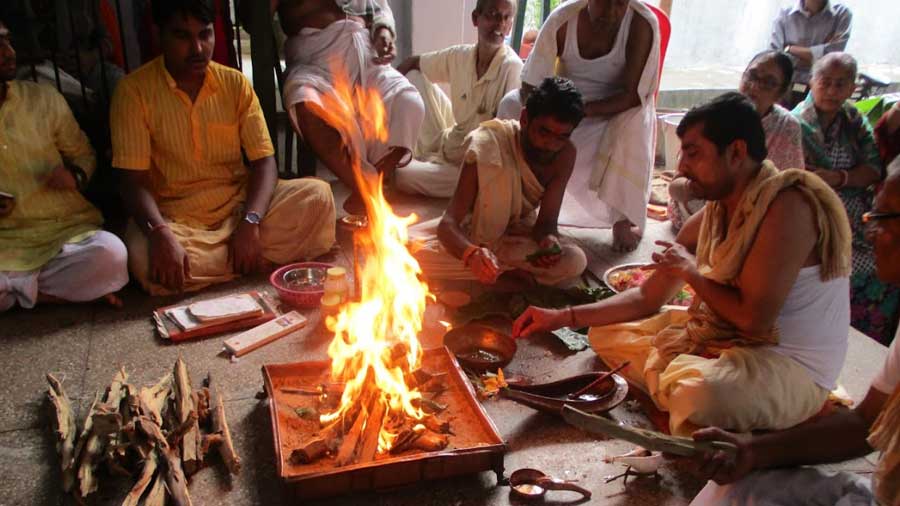
The Hom Yagna ceremony Bandopadhyay family
Jagadish Bachaspati had four sons — Ramakrishna Vidyanidhi, Gangaram, Balaram and Ayodhya Ram. Before his death, he left the responsibility of Nitya Puja (daily worship) of the family idol in the hands of his eldest son, Ramakrishna.
Ramakanai was the eldest son of Ramakrishna. The economic condition of the Bandopadhyay family began to improve from his time. Ramkanai left their ancestral home and moved to another land nearby. He was entrusted with the responsibility of Anantadev’s daily service and it was in this house that he established Narayan Shila. The main Durga Puja of the family was conducted at the Durga dalan here and the residence was known as ‘Baro bari’. Ramakrishna's descendants later built a separate house to its north-east, which came to be known as ‘Natun bari’.
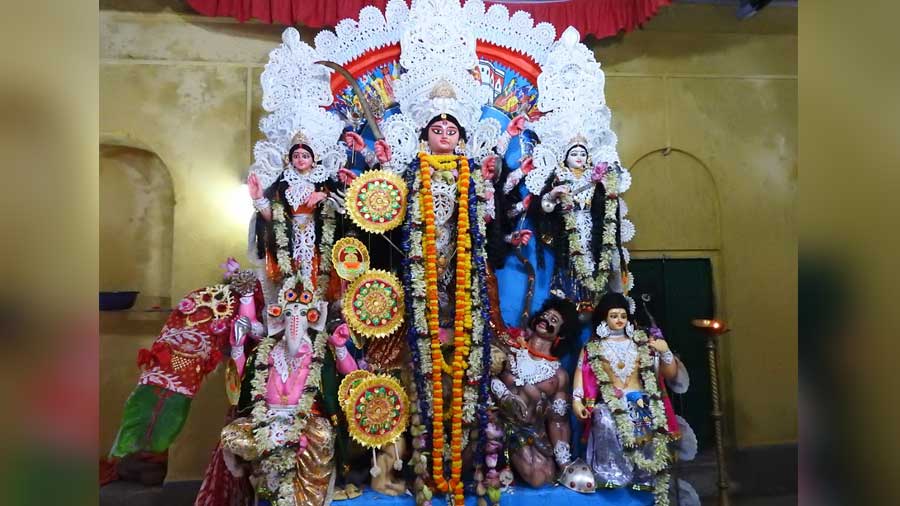
An idol from a previous year Bandopadhyay family
During the puja, after invocation of the Goddess, the idols, ornaments, decorations and weapons are given Naibdya (uncooked offerings) separately. Goddess Durga is bestowed with 16 separate offerings on Saptami, 22 offerings on Ashtami and finally 20 offerings on Navami. Earlier animal sacrifice used to be held, but has now been stopped. Instead, sugarcane or pumpkins are ‘sacrificed’.
During Durga Puja, pancha banjan is offered to the Goddess every day. Fish is also provided as bhog to the Goddess. On Navami, khichuri is offered. On that day, all family members consume this bhog in front of the Durga dalan of ‘Barobari’. Before Covid times, people of the village and neighbouring areas were also invited for lunch. The Sandhi Puja of the Bandopadhyay family is a grand affair, where other than lighting 108 earthen lamps, the total courtyard and the stairs of the thakur dalan is decorated with candles. On Dashami, the deity is immersed in a waterbody in front of ‘Baro bari’.
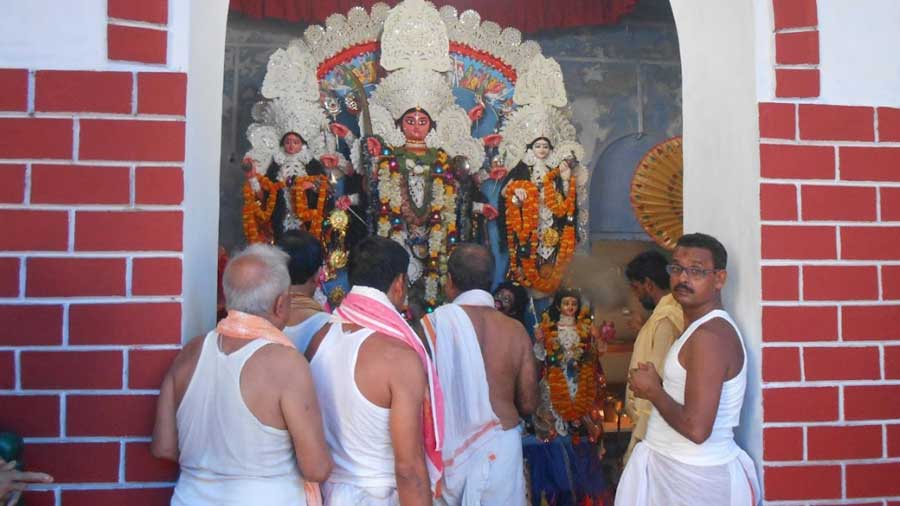
Priests during a ceremony at the 'thakur dalan' Bandopadhyay family
The ‘Natun bari’ is a short walk from ‘Baro bari’. There is no ancient thakur dalan here. The idol here is worshipped inside a new enclosure. The original residence of the Bandopadhyay family at Manasatala also had the Goddess being worshipped separately. Although the original Manasa tree has ceased to exist, the present tree is from the branch of the parent.
Amitabha Gupta is a travel writer and a photographer who specializes in heritage and history of West Bengal. His work has been featured in many magazines and newspapers — both online and offline. He also conducts heritage walks and tours in and around Kolkata.
